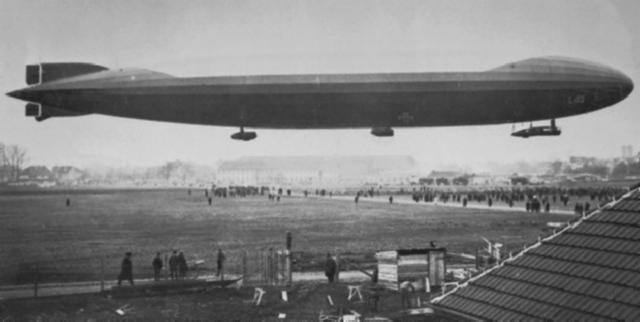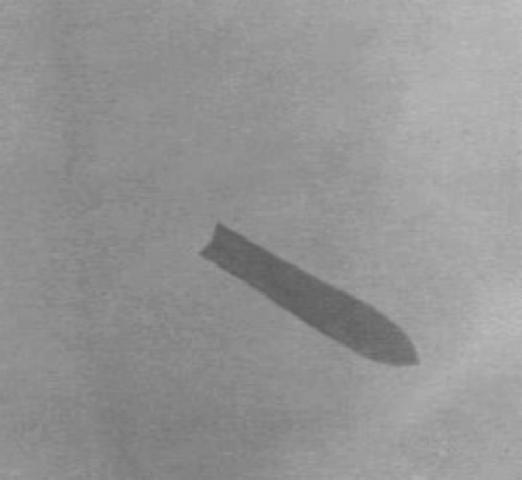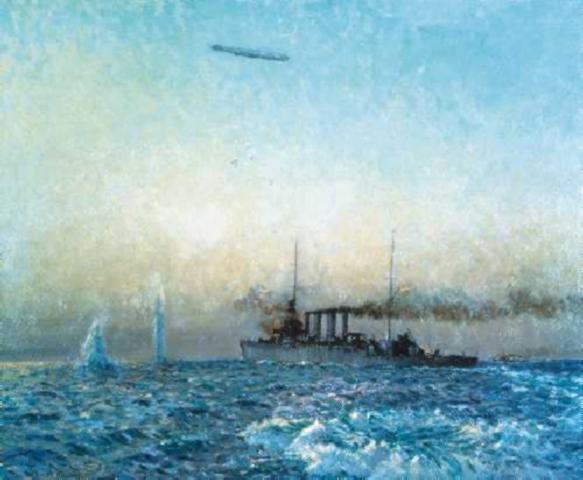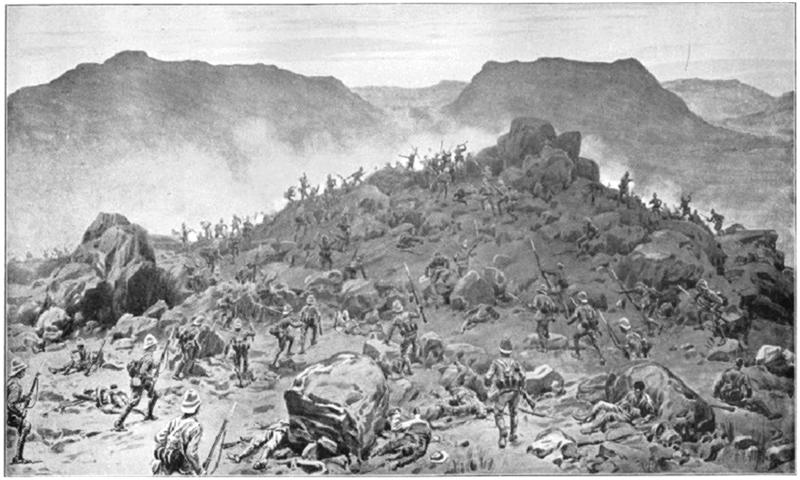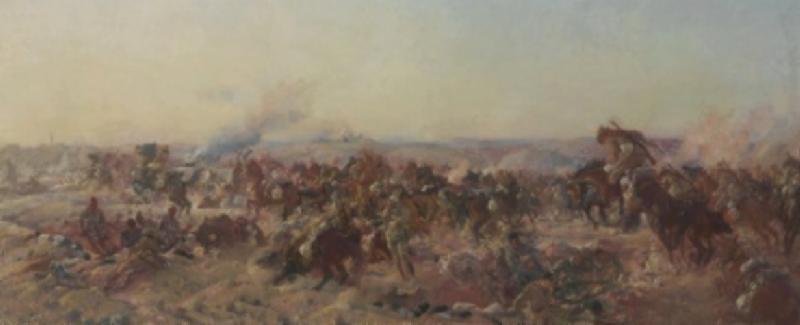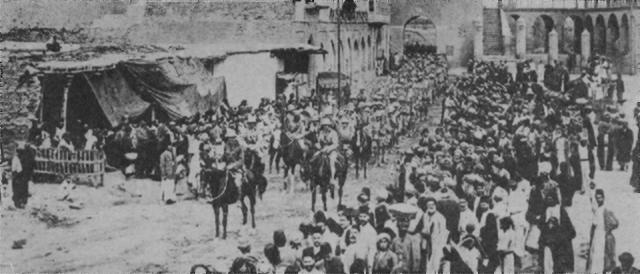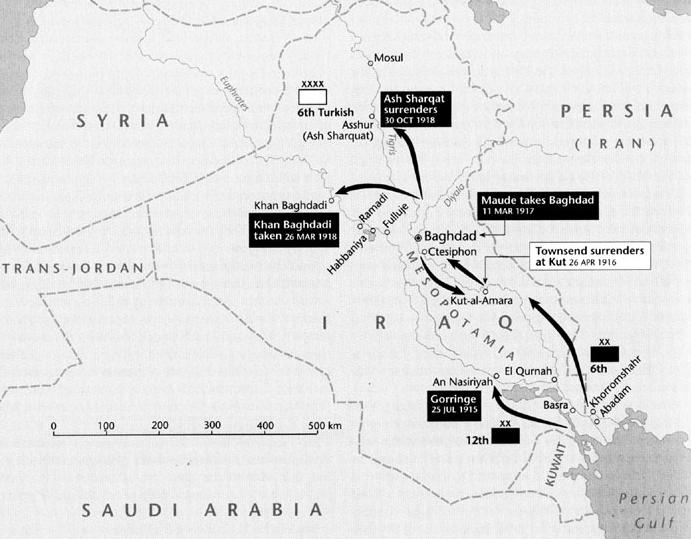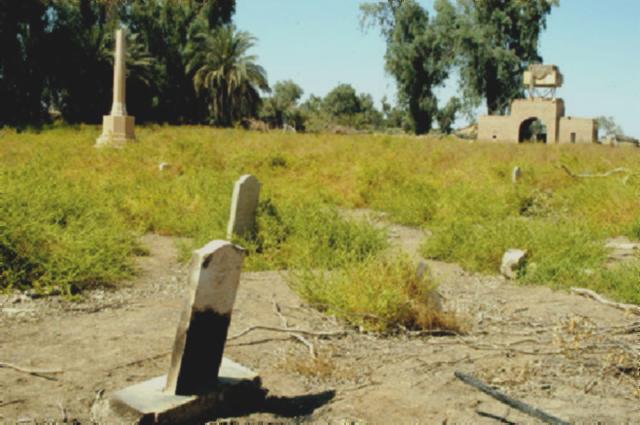| April 1916 | | |
| Division | Brigade | Regiment |
| Australian and New Zealand Mounted Division | | |
| Australian and New Zealand Mounted Division Artillery | | |
| | British 3rd (Territorial Force) Horse Artillery Brigade [8 x 18 pounders] | |
| | | British Leicester Battery |
| | | British Somerset Battery |
| | British 3rd Horse Artillery Brigade Ammunition Column | |
| | British 4th (Territorial Force) Horse Artillery Brigade [8 x 18 pounders] | |
| | | British Inverness Battery |
| | | British Ayr Battery |
| | British 4th Horse Artillery Brigade Ammunition Column | |
| Anzac Mounted Division Engineers | | |
| | Anzac Field Squadron | |
| | Anzac Signal Squadron | |
| Anzac Mounted Division Medical Services | | |
| | 1st Light Horse Field Ambulance | |
| | 2nd Light Horse Field Ambulance | |
| | 3rd Light Horse Field Ambulance | |
| | New Zealand Mounted Field Ambulance | |
| | | |
| | | |
| | 1st Light Horse Brigade | |
| | | 1st Light Horse Regiment |
| | | 2nd Light Horse Regiment |
| | | 3rd Light Horse Regiment |
| | | |
| | 1st Signal Troop | |
| | 2nd Light Horse Brigade | |
| | | 5th Light Horse Regiment |
| | | 6th Light Horse Regiment |
| | | 7th Light Horse Regiment |
| | | |
| | 2nd Signal Troop | |
| | 3rd Light Horse Brigade | |
| | | 8th Light Horse Regiment |
| | | 9th Light Horse Regiment |
| | | 10th Light Horse Regiment |
| | 3rd Signal Troop | |
| | New Zealand Mounted Rifles Brigade | |
| | | New Zealand Auckland Mounted Rifles |
| | | New Zealand Canterbury, Wellington Mounted Rifles |
| | | New Zealand Wellington Mounted Rifles |
| | | |
| | New Zealand Mounted Rifles Signal Troop | |
| | | |
| | | |
| | | |
| | | |
| | | |
| | | |
| Anzac Mounted Division Train | | |
| | 1st Supply Section | |
| | 2nd Supply Section | |
| | 3rd Supply Section | |
| | New Zealand Mounted Rifles Supply Section | |
| | | |
| Anzac Mounted Division Veterinary Services | | |
| | 6th Mobile Veterinary Section | |
| | 7th Mobile Veterinary Section | |
| | 8th Mobile Veterinary Section | |
| | New Zealand 2nd Mobile Veterinary Section | |
| |
| February 1917 | | |
| Division | Brigade | Regiment |
| Australian and New Zealand Mounted Division | | |
| Australian and New Zealand Mounted Division Horse Artillery | | |
| | British 3rd (Territorial Force) Horse Artillery Brigade [8 x 18 pounders] | |
| | | British Leicester Battery |
| | | British Somerset Battery |
| | British 3rd Horse Artillery Brigade Ammunition Column | |
| | British 4th (Territorial Force) Horse Artillery Brigade [8 x 18 pounders] | |
| | | British Inverness Battery |
| | | British Ayr Battery |
| | British 4th Horse Artillery Brigade Ammunition Column | |
| Anzac Mounted Division Engineers | | |
| | Anzac Field Squadron | |
| | Anzac Signal Squadron | |
| Anzac Mounted Division Medical Services | | |
| | 1st Light Horse Field Ambulance | |
| | 2nd Light Horse Field Ambulance | |
| | | |
| | New Zealand Mounted Field Ambulance | |
| | British 22nd Mounted Field Ambulance | |
| 7th Sanitary Section | | |
| | 1st Light Horse Brigade | |
| | | 1st Light Horse Regiment |
| | | 2nd Light Horse Regiment |
| | | 3rd Light Horse Regiment |
| | 1st Machinegun Squadron [12 x Vickers machine guns] | |
| | 1st Signal Troop | |
| | 2nd Light Horse Brigade | |
| | | 5th Light Horse Regiment |
| | | 6th Light Horse Regiment |
| | | 7th Light Horse Regiment |
| | 2nd Machinegun Squadron [12 x Vickers machine guns] | |
| | 2nd Signal Troop | |
| | | |
| | | |
| | | |
| | | |
| | | |
| | New Zealand Mounted Rifles Brigade | |
| | | New Zealand Auckland Mounted Rifles |
| | | New Zealand Canterbury, Wellington Mounted Rifles |
| | | New Zealand Wellington Mounted Rifles |
| | New Zealand 1st Machinegun Squadron [12 x Vickers machine guns] | |
| | New Zealand Mounted Rifles Signal Troop | |
| | British 22nd Mounted Brigade | |
| | | British 1/1 Staffordshire Yeomanry |
| | | British 1/1 Lincoln Yeomanry |
| | | British 1/1 East Riding Yeomanry |
| | British 18th Machinegun Squadron [12 x Vickers machine guns] | |
| | British 22nd Mounted Brigade Signal Troop | |
| Anzac Mounted Division Train | | |
| | 1st Supply Section | |
| | 2nd Supply Section | |
| | | |
| | New Zealand Mounted Rifles Supply Section | |
| | 26th Depot Unit of Supply | |
| Anzac Mounted Division Veterinary Services | | |
| | 6th Mobile Veterinary Section | |
| | 7th Mobile Veterinary Section | |
| | | |
| | New Zealand 2nd Mobile Veterinary Section | |
| | | |
| Imperial Mounted Division | | |
| Imperial Mounted Division Artillery | | |
| | British 19th Horse Artillery Brigade [16 x 18 pounders] | |
| | | 1/1 Nottingham Battery |
| | | 1/1 Berkshire Battery |
| | | A Battery, Honourable Artillery Company |
| | | B Battery, Honourable Artillery Company |
| | | British 19th Horse Artillery Brigade Ammunition Column |
| Imperial Mounted Division Engineers | | |
| | Imperial Field Squadron Engineers | |
| | | 3rd Field Troop |
| | | 4th Field Troop |
| | | British 6th Field Troop |
| | | British 7th Field Troop |
| | Imperial Signal Squadron | |
| Imperial Mounted Division Medical Services | | |
| | 3rd Light Horse Field Ambulance | |
| | 4th Light Horse Field Ambulance | |
| | | |
| | British 1/1 South Midlands Mounted Brigade Field Ambulance | |
| | British 1/2 South Midlands Mounted Brigade Field Ambulance | |
| 8th Sanitary Section | | |
| | 3rd Light Horse Brigade | |
| | | 8th Light Horse Regiment |
| | | 9th Light Horse Regiment |
| | | 10th Light Horse Regiment |
| | 3rd Machinegun Squadron [12 x Vickers machine guns] | |
| | 3rd Signal Troop | |
| | 4th Light Horse Brigade | |
| | | 4th Light Horse Regiment |
| | | 11th Light Horse Regiment |
| | | 12th Light Horse Regiment |
| | 4th Machinegun Squadron [12 x Vickers machine guns] | |
| | 4th Signal Troop | |
| | | |
| | | |
| | | |
| | | |
| | | |
| | | |
| | British 5th Mounted Brigade | |
| | | 1/1 Warwickshire Yeomanry |
| | | 1/1 Gloucester Hussars |
| | | 1/1 Worcestershire Yeomanry |
| | British 16th Machinegun Squadron [12 x Vickers machine guns] | |
| | British 6th Mounted Brigade | |
| | | 1/1 Royal Buckinghamshire Hussars |
| | | 1/1 Queens Own Dorsetshire Yeomanry |
| | | 1/1 Berkshire Yeomanry |
| | British 17th Machinegun Squadron [Vickers machine guns] | |
| Imperial Mounted Division Train | | |
| | 3rd Supply Section | |
| | 4th Supply Section | |
| | | |
| | | |
| | 27th Depot Unit of Supply | |
| Imperial Mounted Division Veterinary Services | | |
| | 8th Mobile Veterinary Section | |
| | 9th Mobile Veterinary Section | |
| | British 3/1 South Midlands Mobile Veterinary Section | |
| | British 4/1 South Midlands Mobile Veterinary Section | |
| |
| August 1917 | | |
| Division | Brigade | Regiment |
| Australian and New Zealand Mounted Division | | |
| Australian and New Zealand Mounted Division Horse Artillery | | |
| | British 3rd (Territorial Force) Horse Artillery Brigade [8 x 18 pounders] | |
| | | British Leicester Battery |
| | | British Somerset Battery |
| | British 3rd Horse Artillery Brigade Ammunition Column | |
| | British 4th (Territorial Force) Horse Artillery Brigade [8 x 18 pounders] | |
| | | British Inverness Battery |
| | | British Ayr Battery |
| | British 4th Horse Artillery Brigade Ammunition Column | |
| Anzac Mounted Division Engineers | | |
| | Anzac Field Squadron | |
| | Anzac Signal Squadron | |
| Anzac Mounted Division Medical Services | | |
| | 1st Light Horse Field Ambulance | |
| | 2nd Light Horse Field Ambulance | |
| | | |
| | New Zealand Mounted Field Ambulance | |
| | British 22nd Mounted Field Ambulance | |
| 7th Sanitary Section | | |
| | 1st Light Horse Brigade | |
| | | 1st Light Horse Regiment |
| | | 2nd Light Horse Regiment |
| | | 3rd Light Horse Regiment |
| | 1st Machinegun Squadron [12 x Vickers machine guns] | |
| | 1st Signal Troop | |
| | 2nd Light Horse Brigade | |
| | | 5th Light Horse Regiment |
| | | 6th Light Horse Regiment |
| | | 7th Light Horse Regiment |
| | 2nd Machinegun Squadron [12 x Vickers machine guns] | |
| | 2nd Signal Troop | |
| | | |
| | | |
| | | |
| | | |
| | | |
| | New Zealand Mounted Rifles Brigade | |
| | | New Zealand Auckland Mounted Rifles |
| | | New Zealand Canterbury, Wellington Mounted Rifles |
| | | New Zealand Wellington Mounted Rifles |
| | New Zealand 1st Machinegun Squadron [12 x Vickers machine guns] | |
| | New Zealand Mounted Rifles Signal Troop | |
| | British 22nd Mounted Brigade | |
| | | British 1/1 Staffordshire Yeomanry |
| | | British 1/1 Lincoln Yeomanry |
| | | British 1/1 East Riding Yeomanry |
| | British 18th Machinegun Squadron [12 x Vickers machine guns] | |
| | British 22nd Mounted Brigade Signal Troop | |
| Anzac Mounted Division Train | | |
| | 1st Supply Section | |
| | 2nd Supply Section | |
| | | |
| | New Zealand Mounted Rifles Supply Section | |
| | 26th Depot Unit of Supply | |
| Anzac Mounted Division Veterinary Services | | |
| | 6th Mobile Veterinary Section | |
| | 7th Mobile Veterinary Section | |
| | | |
| | New Zealand 2nd Mobile Veterinary Section | |
| | | |
| Australian Mounted Division | | |
| Australian Mounted Division Artillery | | |
| | British 19th Horse Artillery Brigade [18 x 18 pounders] | |
| | | 1/1 Nottingham Battery |
| | | |
| | | A Battery, Honourable Artillery Company |
| | | B Battery, Honourable Artillery Company |
| | | British 19th Horse Artillery Brigade Ammunition Column |
| Australian Mounted Division Engineers | | |
| | 2nd Field Squadron | |
| | | 3rd Field Troop |
| | | 4th Field Troop |
| | | |
| | | |
| | 2nd Signal Squadron | |
| Australian Mounted Division Medical Services | | |
| | 3rd Light Horse Field Ambulance | |
| | 4th Light Horse Field Ambulance | |
| | | |
| | British 1/1 South Midlands Mounted Brigade Field Ambulance | |
| | | |
| 8th Sanitary Section | | |
| | 3rd Light Horse Brigade | |
| | | 8th Light Horse Regiment |
| | | 9th Light Horse Regiment |
| | | 10th Light Horse Regiment |
| | 3rd Machinegun Squadron [12 x Vickers machine guns] | |
| | 3rd Signal Troop | |
| | 4th Light Horse Brigade | |
| | | 4th Light Horse Regiment |
| | | 11th Light Horse Regiment |
| | | 12th Light Horse Regiment |
| | 4th Machinegun Squadron [12 x Vickers machine guns] | |
| | 4th Signal Troop | |
| | | |
| | | |
| | | |
| | | |
| | | |
| | | |
| | British 5th Mounted Brigade | |
| | | 1/1 Warwickshire Yeomanry |
| | | 1/1 Gloucester Hussars |
| | | 1/1 Worcestershire Yeomanry |
| | British 16th Machinegun Squadron [12 x Vickers machine guns] | |
| | British 6th Signal Troop | |
| | | |
| | | |
| | | |
| | | |
| Australian Mounted Division Train | | |
| | 35th Australian Army Service Corps Company | |
| | 36th Australian Army Service Corps Company | |
| | 37th Australian Army Service Corps Company | |
| | 38th Australian Army Service Corps Company | |
| | 27th Depot Unit of Supply | |
| Australian Mounted Division Veterinary Services | | |
| | 8th Mobile Veterinary Section | |
| | 9th Mobile Veterinary Section | |
| | British 3/1 South Midlands Mobile Veterinary Section | |
| | | |
| |
| February 1918 | | |
| Division | Brigade | Regiment |
| Australian and New Zealand Mounted Division | | |
| Anzac Mounted Division Artillery | | |
| | British 18th Horse Artillery Brigade [18 x 13 pounders] | |
| | | |
| | | British Somerset Battery |
| | | |
| | | |
| | | British Inverness Battery |
| | | British Ayr Battery |
| | British 18th Horse Artillery Brigade Ammunition Column | |
| Anzac Mounted Division Engineers | | |
| | 1st Field Squadron | |
| | 1st Signal Squadron | |
| Anzac Mounted Division Medical Services | | |
| | 1st Light Horse Field Ambulance | |
| | 2nd Light Horse Field Ambulance | |
| | | |
| | New Zealand Mounted Field Ambulance | |
| | | |
| 7th Sanitary Section | | |
| | 1st Light Horse Brigade | |
| | | 1st Light Horse Regiment |
| | | 2nd Light Horse Regiment |
| | | 3rd Light Horse Regiment |
| | 1st Machinegun Squadron [12 x Vickers machine guns] | |
| | 1st Signal Troop | |
| | 2nd Light Horse Brigade | |
| | | 5th Light Horse Regiment |
| | | 6th Light Horse Regiment |
| | | 7th Light Horse Regiment |
| | 2nd Machinegun Squadron [12 x Vickers machine guns] | |
| | 2nd Signal Troop | |
| | | |
| | | |
| | | |
| | | |
| | | |
| | New Zealand Mounted Rifles Brigade | |
| | | New Zealand Auckland Mounted Rifles |
| | | New Zealand Canterbury, Wellington Mounted Rifles |
| | | New Zealand Wellington Mounted Rifles |
| | New Zealand 1st Machinegun Squadron [12 x Vickers machine guns] | |
| | New Zealand Mounted Rifles Signal Troop | |
| | | |
| | | |
| | | |
| | | |
| | | |
| | | |
| Anzac Mounted Division Train | | |
| | 32nd Australian Army Service Corps Company | |
| | 33rd Australian Army Service Corps Company | |
| | 34th Australian Army Service Corps Company | |
| | 5th New Zealand Army Service Corps Company | |
| | 26th Depot Unit of Supply | |
| Anzac Mounted Division Veterinary Services | | |
| | 6th Mobile Veterinary Section | |
| | 7th Mobile Veterinary Section | |
| | | |
| | New Zealand 2nd Mobile Veterinary Section | |
| | | |
| Australian Mounted Division | | |
| Australian Mounted Division Artillery | | |
| | British 19th Horse Artillery Brigade [18 x 18 pounders] | |
| | | 1/1 Nottingham Battery |
| | | |
| | | A Battery, Honourable Artillery Company |
| | | B Battery, Honourable Artillery Company |
| | | British 19th Horse Artillery Brigade Ammunition Column |
| Australian Mounted Division Engineers | | |
| | 2nd Field Squadron | |
| | | 3rd Field Troop |
| | | 4th Field Troop |
| | | |
| | | |
| | 2nd Signal Squadron | |
| Australian Mounted Division Medical Services | | |
| | 3rd Light Horse Field Ambulance | |
| | 4th Light Horse Field Ambulance | |
| | | |
| | British 1/1 South Midlands Mounted Brigade Field Ambulance | |
| | | |
| 8th Sanitary Section | | |
| | 3rd Light Horse Brigade | |
| | | 8th Light Horse Regiment |
| | | 9th Light Horse Regiment |
| | | 10th Light Horse Regiment |
| | 3rd Machinegun Squadron [12 x Vickers machine guns] | |
| | 3rd Signal Troop | |
| | 4th Light Horse Brigade | |
| | | 4th Light Horse Regiment |
| | | 11th Light Horse Regiment |
| | | 12th Light Horse Regiment |
| | 4th Machinegun Squadron [12 x Vickers machine guns] | |
| | 4th Signal Troop | |
| | | |
| | | |
| | | |
| | | |
| | | |
| | | |
| | British 5th Mounted Brigade | |
| | | 1/1 Warwickshire Yeomanry |
| | | 1/1 Gloucester Hussars |
| | | 1/1 Worcestershire Yeomanry |
| | British 16th Machinegun Squadron [12 x Vickers machine guns] | |
| | British 6th Signal Troop | |
| | | |
| | | |
| | | |
| | | |
| Australian Mounted Division Train | | |
| | 35th Australian Army Service Corps Company | |
| | 36th Australian Army Service Corps Company | |
| | 37th Australian Army Service Corps Company | |
| | 38th Australian Army Service Corps Company | |
| | 27th Depot Unit of Supply | |
| Australian Mounted Division Veterinary Services | | |
| | 8th Mobile Veterinary Section | |
| | 9th Mobile Veterinary Section | |
| | British 3/1 South Midlands Mobile Veterinary Section | |
| | | |
| |
| July 1918 | | |
| Division | Brigade | Regiment |
| Australian and New Zealand Mounted Division | | |
| Anzac Mounted Division Artillery | | |
| | British 18th Horse Artillery Brigade [18 x 13 pounders] | |
| | | |
| | | British Somerset Battery |
| | | |
| | | |
| | | British Inverness Battery |
| | | British Ayr Battery |
| | British 18th Horse Artillery Brigade Ammunition Column | |
| Anzac Mounted Division Engineers | | |
| | 1st Field Squadron | |
| | 1st Signal Squadron | |
| Anzac Mounted Division Medical Services | | |
| | 1st Light Horse Field Ambulance | |
| | 2nd Light Horse Field Ambulance | |
| | | |
| | New Zealand Mounted Field Ambulance | |
| | | |
| 7th Sanitary Section | | |
| | 1st Light Horse Brigade | |
| | | 1st Light Horse Regiment |
| | | 2nd Light Horse Regiment |
| | | 3rd Light Horse Regiment |
| | 1st Machinegun Squadron [12 x Vickers machine guns] | |
| | 1st Signal Troop | |
| | 2nd Light Horse Brigade | |
| | | 5th Light Horse Regiment |
| | | 6th Light Horse Regiment |
| | | 7th Light Horse Regiment |
| | 2nd Machinegun Squadron [12 x Vickers machine guns] | |
| | 2nd Signal Troop | |
| | | |
| | | |
| | | |
| | | |
| | | |
| | New Zealand Mounted Rifles Brigade | |
| | | New Zealand Auckland Mounted Rifles |
| | | New Zealand Canterbury, Wellington Mounted Rifles |
| | | New Zealand Wellington Mounted Rifles |
| | New Zealand 1st Machinegun Squadron [12 x Vickers machine guns] | |
| | New Zealand Mounted Rifles Signal Troop | |
| | | |
| | | |
| | | |
| | | |
| | | |
| | | |
| Anzac Mounted Division Train | | |
| | 32nd Australian Army Service Corps Company | |
| | 33rd Australian Army Service Corps Company | |
| | 34th Australian Army Service Corps Company | |
| | 5th New Zealand Army Service Corps Company | |
| | 26th Depot Unit of Supply | |
| Anzac Mounted Division Veterinary Services | | |
| | 6th Mobile Veterinary Section | |
| | 7th Mobile Veterinary Section | |
| | | |
| | New Zealand 2nd Mobile Veterinary Section | |
| | | |
| Australian Mounted Division | | |
| Australian Mounted Division Artillery | | |
| | British 19th Horse Artillery Brigade [18 x 18 pounders] | |
| | | 1/1 Nottingham Battery |
| | | |
| | | A Battery, Honourable Artillery Company |
| | | B Battery, Honourable Artillery Company |
| | | British 19th Horse Artillery Brigade Ammunition Column |
| Australian Mounted Division Engineers | | |
| | 2nd Field Squadron | |
| | | 3rd Field Troop |
| | | 4th Field Troop |
| | | |
| | | |
| | 2nd Signal Squadron | |
| Australian Mounted Division Medical Services | | |
| | 3rd Light Horse Field Ambulance | |
| | 4th Light Horse Field Ambulance | |
| | 5th Light Horse Field Ambulance | |
| | | |
| | | |
| 8th Sanitary Section | | |
| | 3rd Light Horse Brigade | |
| | | 8th Light Horse Regiment |
| | | 9th Light Horse Regiment |
| | | 10th Light Horse Regiment |
| | 3rd Machinegun Squadron [12 x Vickers machine guns] | |
| | 3rd Signal Troop | |
| | 4th Light Horse Brigade | |
| | | 4th Light Horse Regiment |
| | | 11th Light Horse Regiment |
| | | 12th Light Horse Regiment |
| | 4th Machinegun Squadron [12 x Vickers machine guns] | |
| | 4th Signal Troop | |
| | 5th Light Horse Brigade | |
| | | 14th Light Horse Regiment |
| | | 15th Light Horse Regiment |
| | | French 1er Regiment Mixte de Cavalerie Du Lavant |
| | New Zealand 2nd Machine Gun Squadron [12 x Vickers machine guns] | |
| | 5th Signal Troop | |
| | | |
| | | |
| | | |
| | | |
| | | |
| | | |
| | | |
| | | |
| | | |
| | | |
| Australian Mounted Division Train | | |
| | 35th Australian Army Service Corps Company | |
| | 36th Australian Army Service Corps Company | |
| | 37th Australian Army Service Corps Company | |
| | 38th Australian Army Service Corps Company | |
| | 27th Depot Unit of Supply | |
| Australian Mounted Division Veterinary Services | | |
| | 8th Mobile Veterinary Section | |
| | 9th Mobile Veterinary Section | |
| | 10th Mobile Veterinary Section | |
| | | |
| | | |
